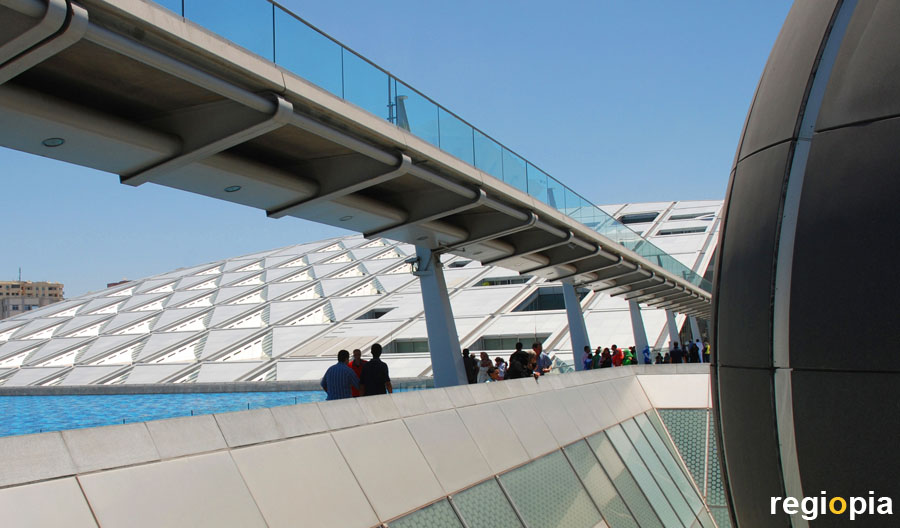
Library of Alexandria
The Library of Alexandria was the largest library of the ancient world around 300 BC until it was destroyed. It was located in the palace district, its exact location and the time of its destruction are unknown. No remains of the library have yet been found. Back then, scientific texts were written on scrolls. Perhaps there never was a library and the scrolls were stored in different buildings in the palace district. In 2002 the new Bibliotheca Alexandrina was opened with a capacity of 8 million books. The new Alexandria library was built right on the harbor. The Norwegian architecture firm Snøhetta designed a futuristic pane that rises out of a water basin on a circular floor plan. The base is made of gray granite in which writings from all languages of the world have been carved. Of the construction costs of US $ 220 million, Egypt contributed 120 million and 29 other states paid the rest.
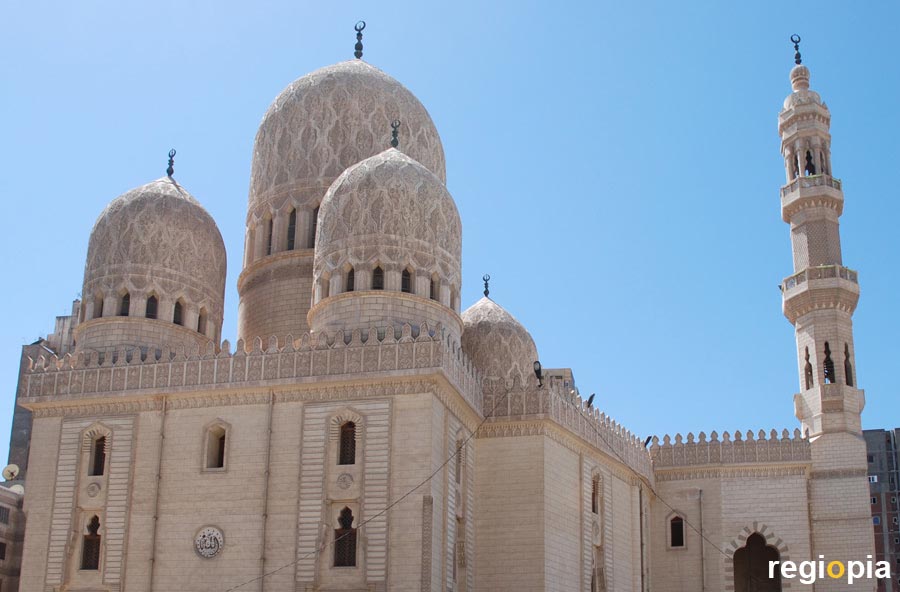
Abu Abbas al-Mursi Mosque
Over the grave of the Muslim saint Al-Morsi Abu Abbas, who died in Alexandria in 1286, the very beautiful mosque in the Neo-Mamluk style was built in 1945 by the Italian architects Eugenio Valzania and Mario Rossi. Al-Mursi Abu Abbas was a Sufi clergyman who was born in Murcia (Spain) and left his homeland for Egypt after the reconquest of Cordoba (1236) by the Christians. Sufism is an ascetic, spiritual branch of Islam that is mainly practiced in Iraq and Pakistan. “Sufism is glory in misery, wealth in poverty, domination in servitude, satiation in hunger, life in death and sweetness in bitterness. The Sufi is the one who is satisfied with everything God does, so that God is satisfied with everything he does. ”Quotation from Abu Sa'id.
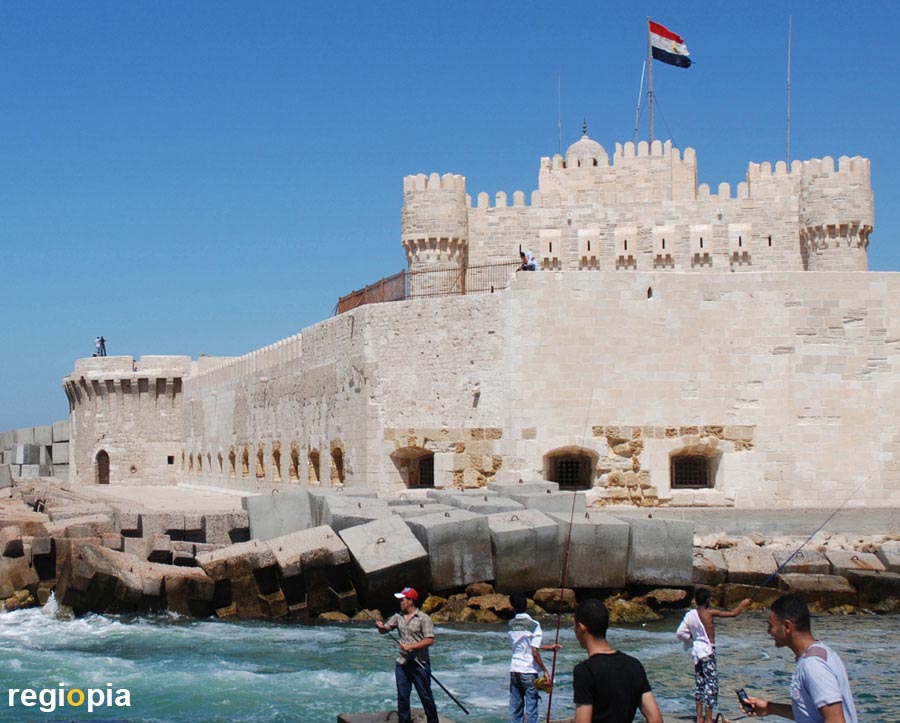
Fort Qaitbay
Fort Qaitbay was built in 1479 on the remains of the legendary Pharos lighthouse. The lighthouse of Alexandria was destroyed by an earthquake in 1303 and was until then one of the 7 wonders of the world. The Pharos was built around 279 BC by Sostratos of Knidos on behalf of the ruler Ptolemy I. Ptolemy was a general under Alexander the Great who founded the city and gave it his name. The lighthouse was then on an island called Pharos. This island was connected to the mainland by a causeway that is still walkable today. From here you can see the open sea and the Bay of Alexandria.
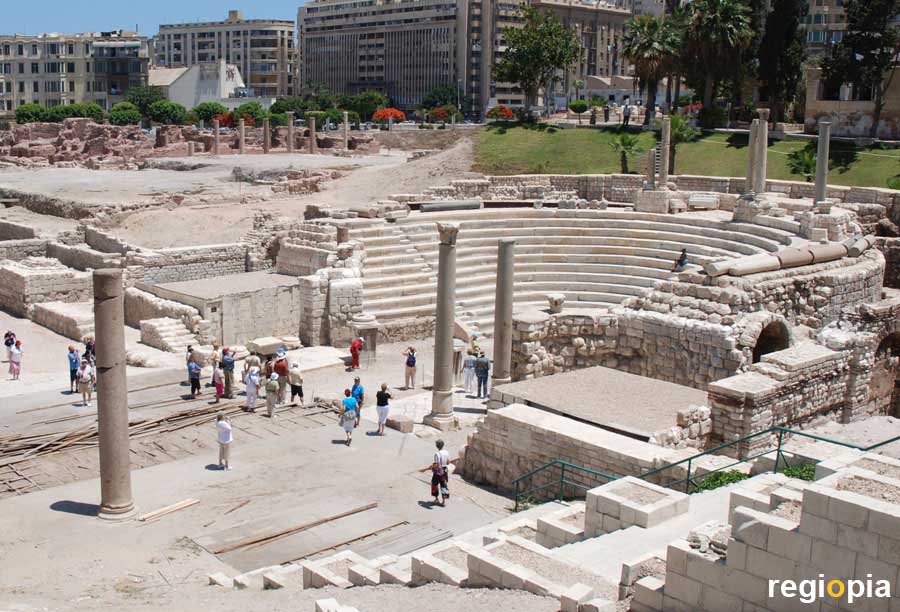
Roman Amphitheater
Alexandria was a Greek city which was conquered by the Romans 30 BC and was then the second largest city of the Roman Empire. In the archaeological site are the remains of Roman Alexandria, with an amphitheater and very well-preserved bird mosaics. Egyptian statues, inscriptions and sphinxes have also been found. The excavation site is well worth seeing and is located north of the train station.
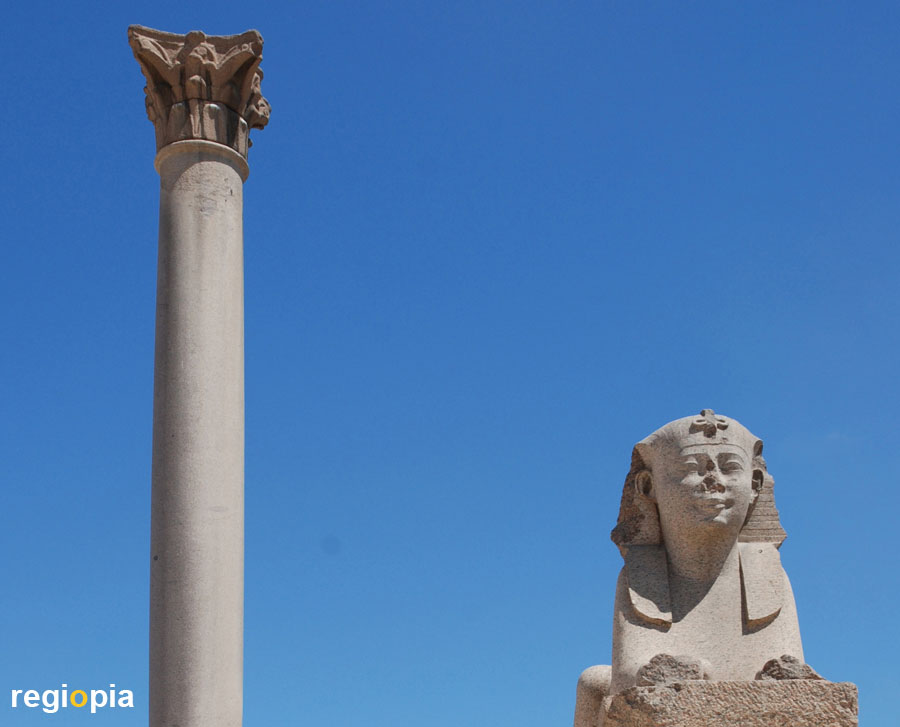
Pompeius Column
The 30 m high "Pompeius Column" has nothing to do with Pompeius, but according to the inscription it was the base of a statue of Diocletian, Roman emperor from 284-305. The much more important building on the site, was the Egyptian temple of Serapis, which was destroyed 391 by the roman Emperor Theodosius.
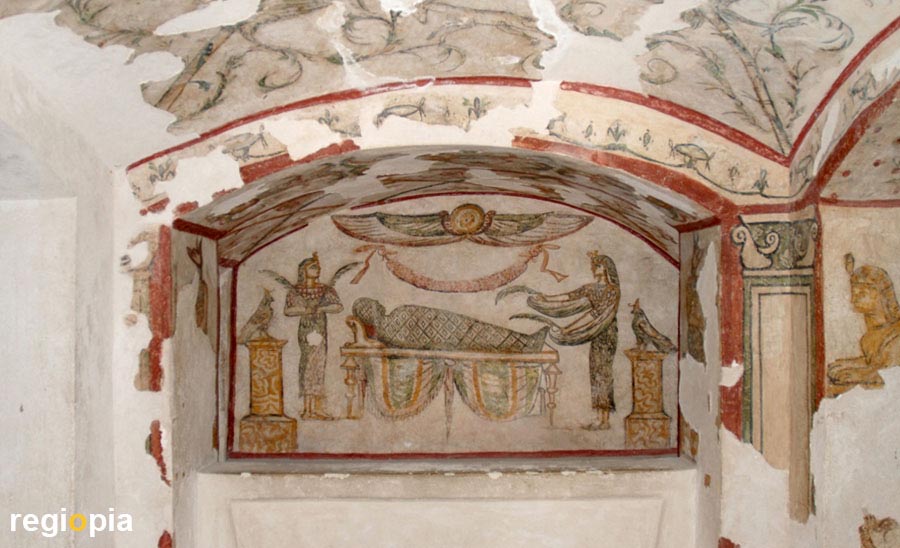
Kom ash-Shuqqafa Tombs
Near the Pompeius Column is the underground burial site of the Roman upper class. You can visit the burial chambers, which are decorated with murals in Egyptian-Greek style.

Montaza Palace
The summer residence of the Egyptian presidents was built in 1929 by the Italian architect Ernesto Verrucci. The Montaza Palace itself can not be visited but the beautiful coastline where the residence is located is accessible for the public.
Map sights of Alexandria
ads
Travel Guide Alexandria
ads
ads


